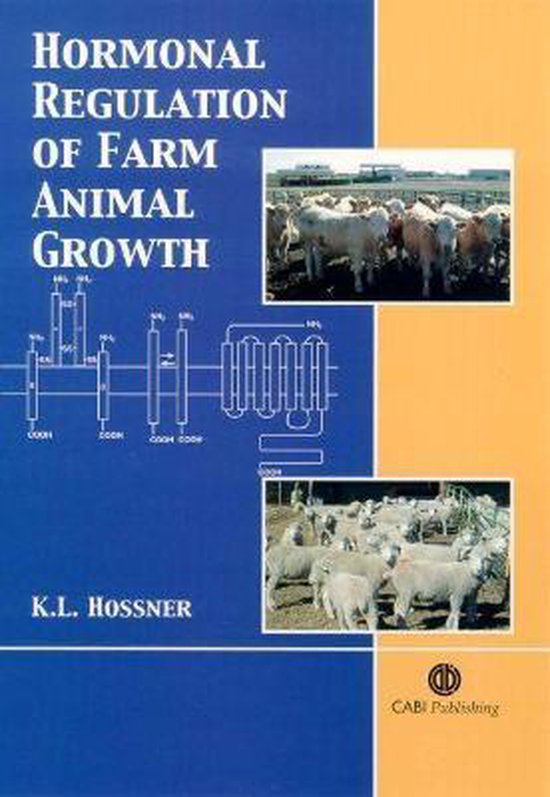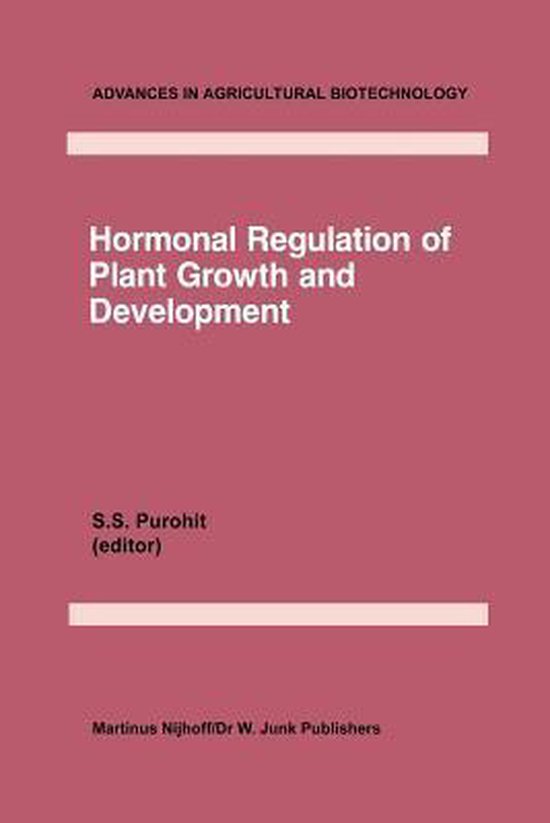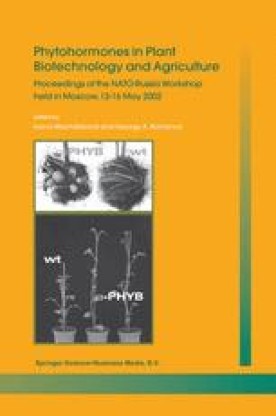Plant Hormonal Regulation Differs From Animal Hormonal Regulation In That
Plant Hormonal Regulation Differs From Animal Hormonal Regulation In That Plant hormonal regulation differs from animal hormonal regulation in several fundamental ways. While animals control their physiological processes primarily through the endocrine system, plants depend on various hormones to regulate growth, development, and responses to their environment. Plant hormones, also known as phytohormones, play a vital role in coordinating plant growth, reproduction, and defense mechanisms. In this article, we will explore the major differences between plant hormonal regulation and animal hormonal regulation, highlighting why plants have evolved unique mechanisms to adapt and survive in their environments. Subheading 1: Plant hormonal regulation and its role in growth and development Plant hormonal regulation encompasses a complex network of signaling molecules that orchestrate various physiological responses. These hormones act as chemical messengers, facilitating communication between different parts of the plant and coordinating growth and development. One of the key differences between plant and animal hormonal regulation is the presence of multiple hormones with distinct functions in plants. Unlike animals, which primarily rely on a few major hormones such as insulin, testosterone, and estrogen, plants have a wide array of hormones that work in concert to regulate various processes. One important plant hormone involved in growth and development is auxin. Auxin controls cell elongation, root development, and the formation of vascular tissue. Its distribution within the plant determines the direction of growth and influences phototropism and gravitropism. Other plant hormones, such as cytokinins and gibberellins, promote cell division, shoot elongation, and flowering. Additionally, abscisic acid (ABA) and ethylene regulate responses to environmental stress, seed dormancy, and senescence. To emphasize the importance of these hormones in plant growth and development, let's take a closer look at the role of auxin. Auxin is synthesized in the apical meristem and then transported to different parts of the plant. Within the cells, auxin regulates gene expression by binding to specific receptors, which initiates a signaling cascade. This signaling pathway ultimately leads to changes in gene expression, facilitating elongation of cells in response to light or gravity stimuli. Alongside auxin, gibberellins also play a crucial role in plant growth. These hormones stimulate cell division and elongation, promoting shoot growth and influencing flowering and seed germination. The unique interactions between different hormones allow plants to modulate their growth responses accurately, adapting to changes in their surroundings. Subheading 2: Signaling pathways and interplay between plant hormones Unlike the relatively simple hormonal regulation in animals, plant hormonal regulation involves intricate signaling pathways and the interplay between different hormones. These signaling pathways allow plants to respond to external stimuli, such as light, gravity, temperature, and biotic and abiotic stresses. Plant hormones interact with each other through complex mechanisms, often exhibiting both synergistic and antagonistic effects. For example, the interplay between auxin and cytokinins is crucial in determining plant growth patterns. Auxin promotes cell elongation, while cytokinins promote cell division. The balance between these two hormones regulates overall plant growth, shaping the plant's architecture. Additionally, abscisic acid (ABA) and gibberellins have opposing effects on seed germination. ABA promotes seed dormancy, inhibiting germination, while gibberellins counteract ABA's effects, promoting seed germination when conditions are favorable. This delicate balance ensures that seeds germinate under optimal conditions while remaining dormant during unfavorable periods. Furthermore, plants respond to changes in light through the hormone ethylene. Ethylene is involved in various processes such as fruit ripening, leaf senescence, and flower petal senescence. Its production increases during fruit ripening, triggering the expression of genes associated with color change and flavor development. The complex interplay between plant hormones allows for precise regulation and coordination of various physiological processes, enabling plants to adapt to their surroundings and optimize their growth and development. Subheading 3: Contrasting evolution and mechanism between plant and animal hormonal regulation Plant and animal hormonal regulation have evolved independently, resulting in distinct mechanisms and modes of action. One notable difference is the production and location of hormones. In animals, hormones are primarily produced in specialized endocrine glands and transported through the circulatory system. These hormones act on specific target cells that possess receptors to which the hormones can bind. In contrast, plants produce hormones in various tissues and cells throughout their body. These hormones can act locally or be transported to target sites by both active and passive transport mechanisms. This decentralized production and action allow plants to respond flexibly and adaptively to local environmental cues without solely relying on long-distance signaling. Another contrasting aspect is the differences in hormone synthesis and metabolism. While animals commonly synthesize hormones from cholesterol or amino acids, plants biosynthesize hormones through diverse pathways involving various precursor molecules. For example, auxin is derived from the amino acid tryptophan and indole-3-acetic acid (IAA) is its primary active form. On the other hand, gibberellins are synthesized from precursor molecules such as ent-kaurene. Importantly, considering the differences in hormone regulation, it is essential to remember that plants lack a centralized nervous system like animals. Consequently, plants rely on hormonal regulation to integrate and coordinate physiological processes, allowing them to respond to internal and external stimuli. FAQs: Q1: How do plant hormones differ from animal hormones? A1: Plant hormones, also known as phytohormones, differ from animal hormones in how they are produced, distributed, and their mode of action. Plants have a wider variety of hormones that work together to regulate growth and development. Additionally, plant hormones are produced in various tissues and can act locally or be transported to target sites without relying on a centralized circulatory system. Q2: Can plant hormones be beneficial for humans? A2: Yes, plant hormones have several practical applications in agriculture, horticulture, and medicine. For example, the use of auxin in rooting powders promotes the growth and propagation of plant cuttings. Additionally, the hormone abscisic acid (ABA) is utilized in the development of drought-tolerant crops. Q3: Are plant hormones solely responsible for plant growth and development? A3: While plant hormones play a crucial role in growth and development, they do not act alone. Other factors such as light, temperature, nutrients, and genetic factors also influence plant growth and development. The interaction between hormones and these environmental cues determines the final outcome. In conclusion, plant hormonal regulation differs significantly from animal hormonal regulation. Plants have evolved complex mechanisms involving multiple hormones that interact and coordinate various physiological processes. These differences allow plants to adapt and thrive in a diverse range of environments. Understanding the unique aspects of plant hormonal regulation contributes to our knowledge of plant biology and offers opportunities for applications in agriculture and horticulture.  Image Source : www.researchgate.net
Image Source : www.researchgate.net  Image Source : www.abebooks.com
Image Source : www.abebooks.com  Image Source : www.bol.com
Image Source : www.bol.com  Image Source : www.bol.com
Image Source : www.bol.com  Image Source : cmapspublic.ihmc.us
Image Source : cmapspublic.ihmc.us  Image Source : link.springer.com
Image Source : link.springer.com  Image Source : infolearners.com
Image Source : infolearners.com  Image Source : courses.lumenlearning.com
Image Source : courses.lumenlearning.com
(PDF) Beyond Light: Insights Into The Role Of Constitutively
 Image Source : www.researchgate.net
Image Source : www.researchgate.net Molecular Hormonal Basis Plant Growth By Leshem - AbeBooks
 Image Source : www.abebooks.com
Image Source : www.abebooks.com Hormonal Regulation Of Farm Animal Growth | 9780851990804 | Kim Hossner
 Image Source : www.bol.com
Image Source : www.bol.com Advances In Agricultural Biotechnology- Hormonal Regulation Of Plant
 Image Source : www.bol.com
Image Source : www.bol.com Regulation - Plants
Hormonal Regulation Of Plant Development In The Studies By M. Kh
 Image Source : link.springer.com
Image Source : link.springer.com Hormonal Regulation Of Development II PDF – Free Download - INFOLEARNERS
 Image Source : infolearners.com
Image Source : infolearners.com The Ovarian Cycle, The Menstrual Cycle, And Menopause | Biology For
 Image Source : courses.lumenlearning.com
Image Source : courses.lumenlearning.com hormonal ovarian menstrual reproductive reproduction pituitary menopause hormones hormone hypothalamus phases endocrine involved regulated fsh ovulation lh progesterone ovaries menstruation
Hormonal regulation of plant development in the studies by m. kh. Advances in agricultural biotechnology- hormonal regulation of plant. Molecular hormonal basis plant growth by leshem. (pdf) beyond light: insights into the role of constitutively. The ovarian cycle, the menstrual cycle, and menopause